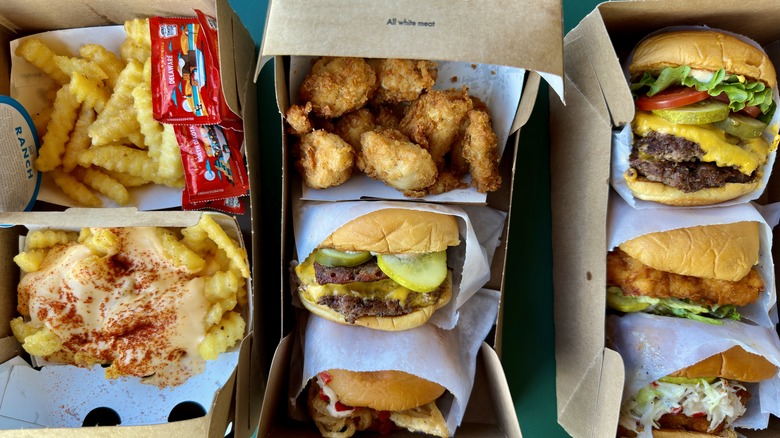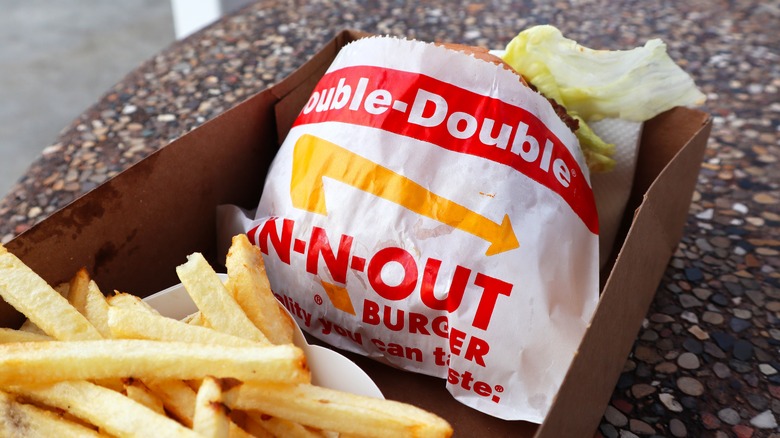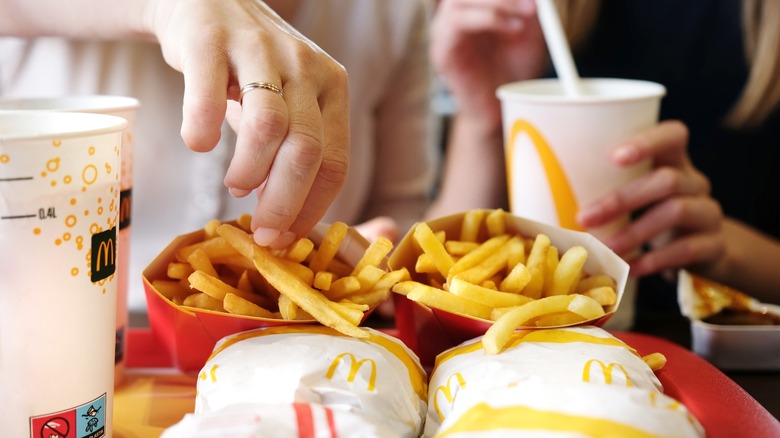Chain Vs Franchise Restaurants: What's The Actual Difference?
When you hear someone ask, "What is your favorite restaurant chain?" you likely aren't paying attention to the nuance behind the question. What comes to mind is likely your most visited fast food drive thru, or the coffee shop you stop at in every city you visit. But the word "chain" doesn't simply refer to a restaurant that has multiple locations — in fact, it has deeper business connotations, especially when compared to the term franchise. These two classifications are often used interchangeably, but from a professional and financial standpoint, there are a few major differences that may not affect your day to day eating habits, but are still important to understand — especially if you are someone who wants to know exactly where your money goes and how it is used by the company that receives your patronage.
The catch is that a chain is owned and operated by a single parent company, while a franchise allows individual, outside owners to come in and operate a single store. Franchises still have to adhere to company policy and can't simply go rogue and make their restaurant whatever they want, but this classification has more freedom than chains do. If you thought that the two restaurant labels meant the same thing, you aren't alone. The truth is, the term 'chain' is an easier catch-all word that has been adopted by the general public — hence why in a ranked list of popular barbecue chains, you might find that many of the listed restaurants are technically franchises.
What is a restaurant chain?
Chains are companies that may have locations worldwide, but are all still owned by the company itself. This can apply to all manner of businesses, but in the case of restaurants, it allows for quality control and consistency concerning things like the menu and service, whether you're ordering in New York City or Nebraska. In this case, the company also makes 100 percent of the profits, since it does all the work rather than hiring individual owners who need to get paid (the franchise model). On the financial flip side of the equation, however, a chain must bear all the costs of every single location, which can be difficult if certain restaurants do better than others.
You might be wondering, "What are some true, definition-accurate, examples of chain restaurants?" You'll find that most non-franchised companies offer what's called fast-casual dining: a cross between fast food and dine-in eating. Notable chains that follow this model include Shake Shack — the burger joint inspired by the fast food pioneer Steak N' Shake — and Chipotle Mexican Grill. But chains come in all shapes and sizes, from the West Coast fast food icon, In N' Out, to sit-down comfort food establishments like Cracker Barrel. Your dining experience will likely be the same across any of these restaurant locations, but those looking to go into business with these companies will need to work directly for headquarters or join the waitstaff. Business-minded folks looking to own their own restaurant location will have to explore the franchise route, instead.
What is a restaurant franchise?
While franchises are still under the supervision of a parent company, no single entity has ownership over each and every restaurant location. Instead, outside owners can invest in the company by being the franchisee of their own restaurant, or in some cases owning a handful of restaurant properties. The franchisee in this case reaps the financial rewards of owning a particularly lucrative and successful location, while still having the support of the parent company for guidance and training. They also share the risk of business operations with the parent company, so it can be a safer investment at times. But unlike chains, franchises don't get the same consistency or benefits from large scale marketing, so the individual freedoms may come with a cost.
However, many franchisees aren't all that worried about individual promotions driving in business thanks to built-in brand awareness — most of the massively popular and well-known restaurants we visit on any long road trip or when we need to fill a late-night craving are classified as franchises. Classic franchise examples include Taco Bell, Kentucky Fried Chicken, and the global giant, McDonalds — which is approaching almost 50,000 locations worldwide. With so many locations, it makes sense why the company would choose to franchise and give individual ownership to community members, allowing them to expand into different neighborhoods. For the franchisee, the name recognition alone comes with benefits of bringing customers through the doors. Owning and operating restaurants is all about creating a successful ecosystem — one that may look different depending on whether you work for a chain or franchise.



